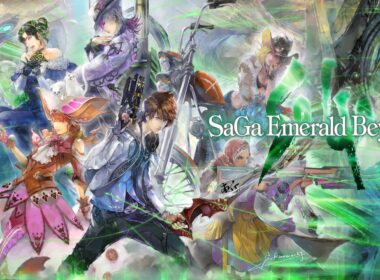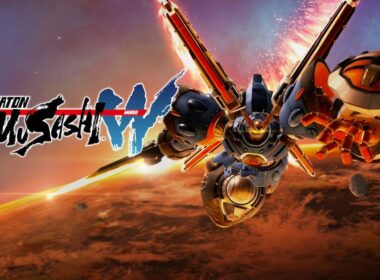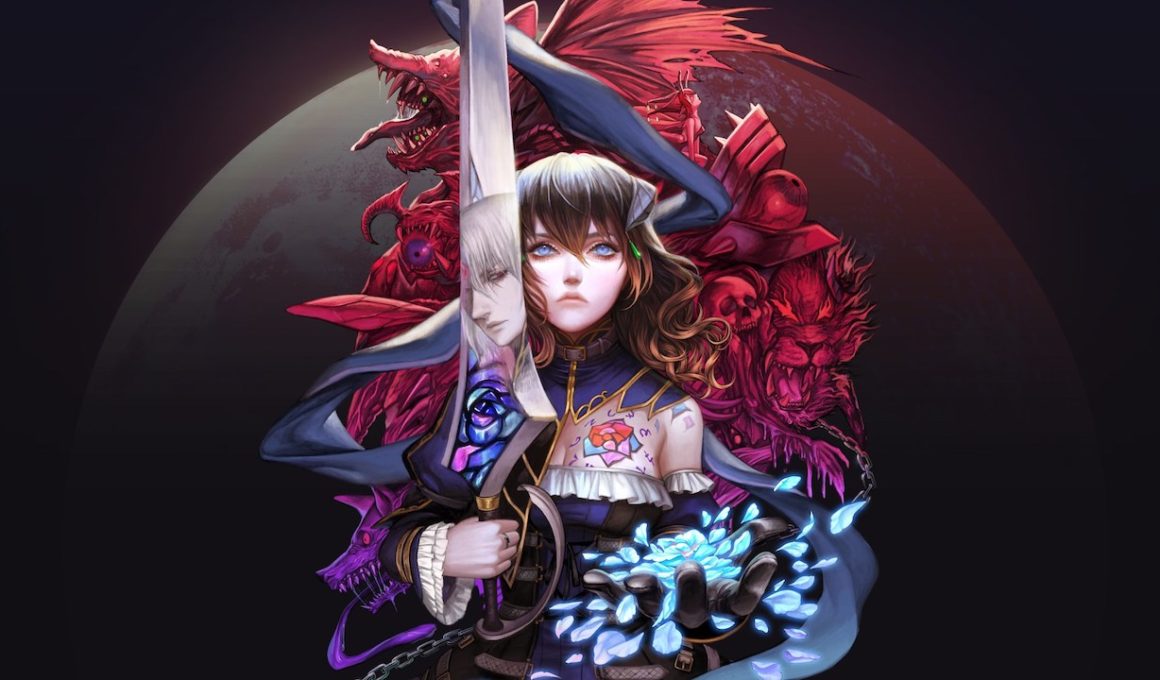It was only up until earlier this year that I first played through Koji Igarashi’s Castlevania: Symphony of the Night to completion. My memories of Castlevania beforehand resonate towards the action-platforming antics that graced the 8 and 16-bit era. Yet, despite ploughing through countless Metroidvania’s over the years, I still totally understood why this particular game is so highly regarded by fans and inspired would-be-developers who had first experienced it back in the day.
The birth of Bloodstained: Ritual of the Night is a curious one. It’s a game that really shouldn’t have needed the backing from the public based on Koji Igarashi’s legacy and vision alone. Yet, taking on the responsibility of adhering to the pledges and promises needed to be made to entice crowdfunding seems to have been the only way that this very game came to be. Despite entering into the world with rather positive feedback on other platforms, we all know by now of the infamous state that the Nintendo Switch version arrived in.
My initial plan was to review Bloodstained: Ritual of the Night upon release. Unfortunately, midway through playing, my Nintendo Switch decided to die on me. By the time I could finally replace the console, reviews were already live for a fair while and saw that I would be simply repeating what has already been said before. It’s for this main reason that I decided to postpone my review until at least after a bigger software update would resolve some of the main issues.
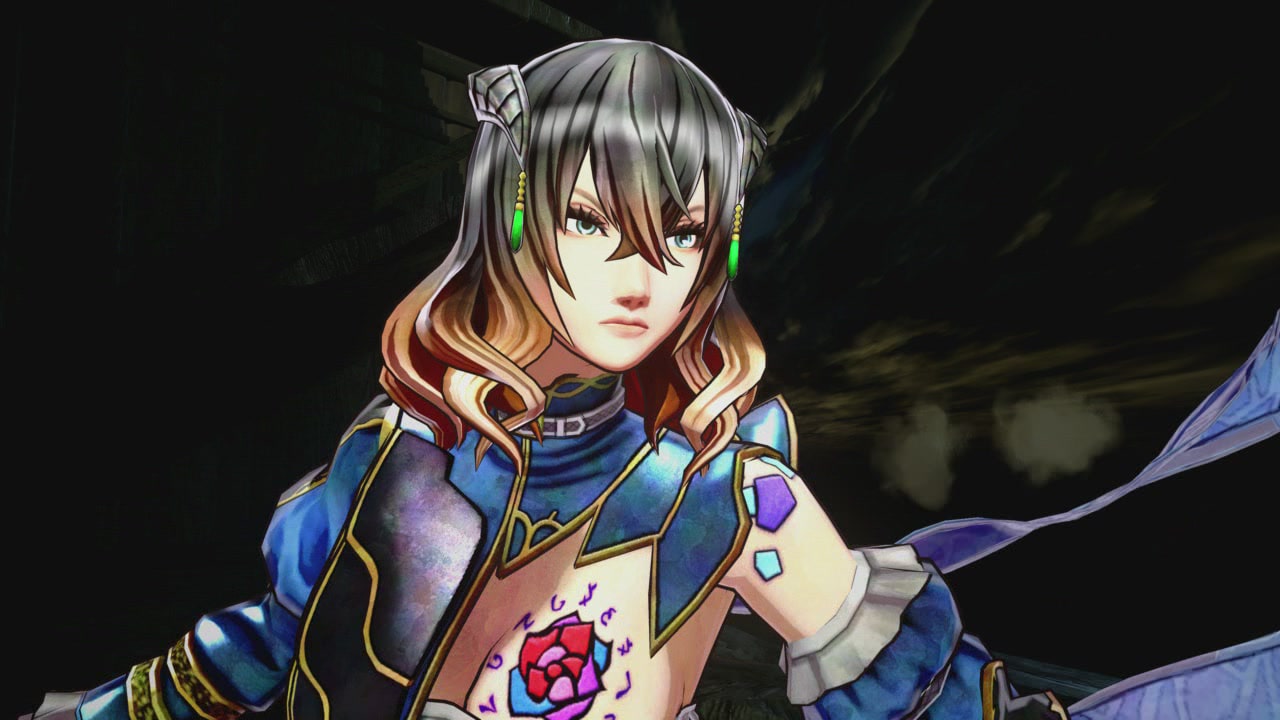
On the dusk of All Hallows’ Eve, the long-promised 1.03 update finally dropped as an effort to improve visuals, loading, performance and, most importantly, input lag. The biggest problem for me was both the delayed input latency and the disruptive game crashes that I would often face. Thankfully, Bloodstained: Ritual of the Night does now control much better with a far tighter response time than before. At least, for the most part. I no longer need to pre-determine my input reactions during tricky platforming segments swamped with flying demons.
As far as performance is concerned, the improvements are clearly apparent, although it’s still obvious more work needs to be done. Ironically, the only time that Bloodstained: Ritual of the Night ever crashed on me post-update was during the initial loading screen when first booting up the game after downloading it. However, while the game does seem much more stable overall, there are a small handful of areas that do manage to actually come worse off than before.
Certain areas can now feel like you’re moving underwater – the Tower of Twin Dragons one of the most affected. Random stutters in gameplay are still present, but not nearly as often as they once were. The loading can be a little hit and miss at times, but again, the improvements are night and day compared to how Bloodstained: Ritual of the Night ran originally. As for the visuals, they do look a bit sharper as a whole with a little less blur greasing up the backgrounds. They aren’t nearly on par with the PlayStation 4 and Xbox One versions, that’s for sure. But at least we can now see the beauty of the castle a little bit closer to how it was intended.
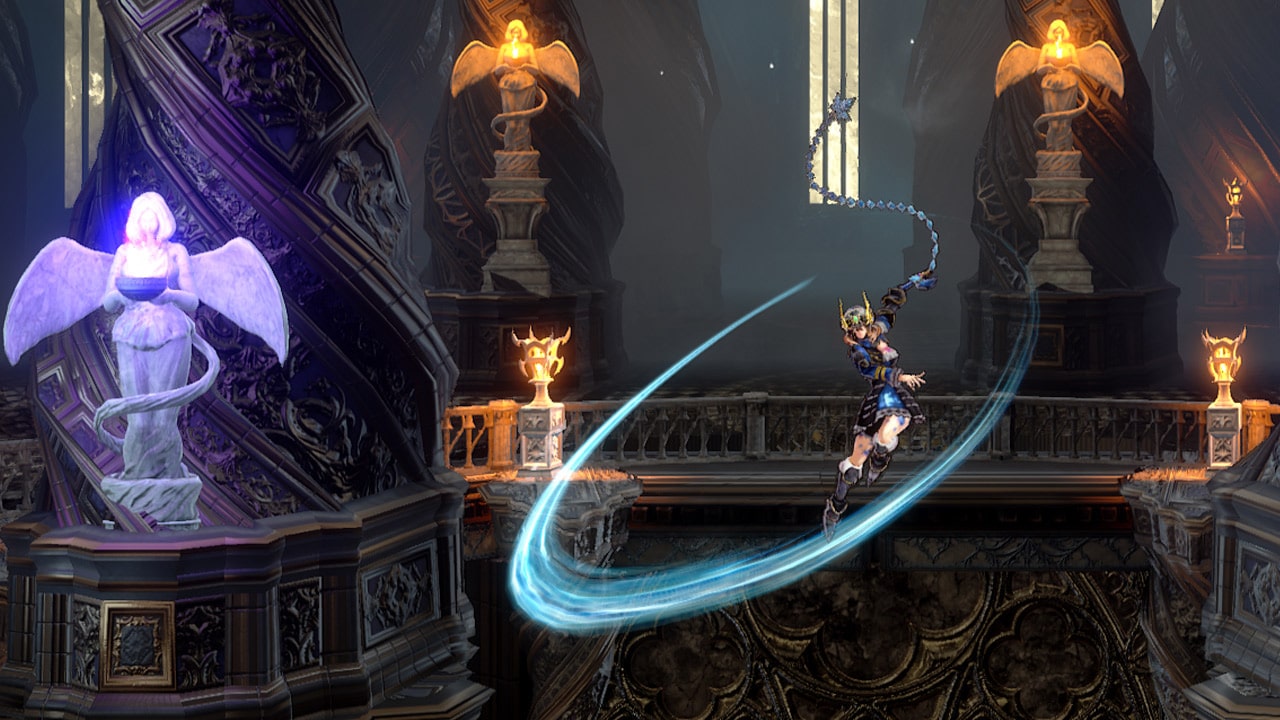
For those who have never played Bloodstained: Ritual of the Night or are somehow unfamiliar with Koji Igarashi’s most renowned Castlevania sequel, it’s basically Metroidvania through and through – the player working their way through an entwining map while earning abilities to uncover and overcome new areas. You play as Miriam – one of two remaining alchemy test subjects turned ‘Shardbinders’ – who has the ability to consume demonic shards of glass by being violently impaled by them. Gabel, the other Shardbinder, has turned from a noble gentleman to the dark side with Miriam keeping her end of the bargain in promising to end the life of whichever one of them becomes corrupted by overwhelming power first.
Shards are an integral component of Miriam’s upgradable abilities. Several of which can be equipped at once with the majority reflecting the strengths of the enemies that they are pried from. These shards are dropped by pretty much every enemy in the game at random, so you may have to slay a certain ghoul several times before having the chance to possess their ability. It can be a little overwhelming at first in how many shards can be collected and consumed through a huge variety of enemies encountered. But at least there are some excellent features in place to balance out a skill set to keep it all manageable.
A shortcut wheel with up to eight unlockable customisable slots can be swapped between mid-game at ease. So for example, one shortcut could have a double-handed sword equipped with a shard that could either increase the attack power or speed of double-handed weaponry. Secondary shards can also be equipped as an extra form of attack or defence. So if you were to claim a shard of a hound-like creature you can order it to charge towards an enemy. The shortcut wheel becomes particularly handy when considering the various fighting styles that can be equipped. Swapping between a firearm set into a kicking style with shards to complement their advantages makes the process of editing slots far more appealing.
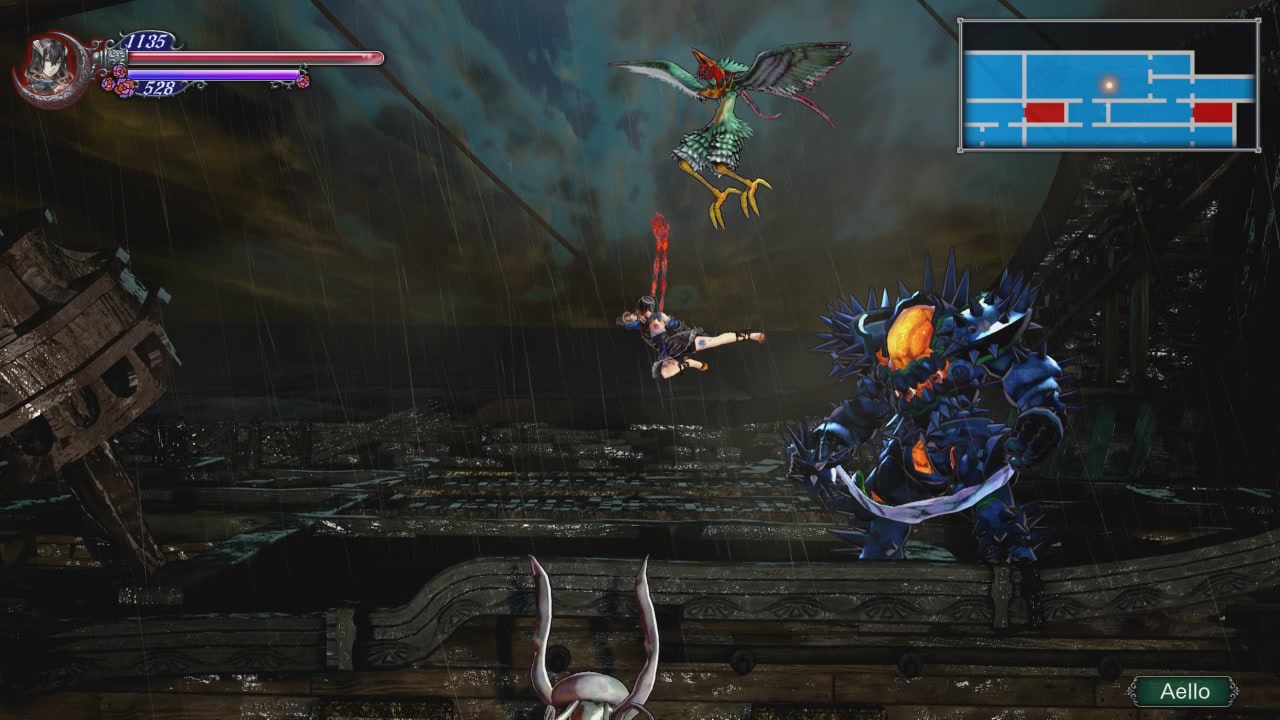
Certain shards can also be used as partnering aids known as Familiars. These goons usually hover around you during gameplay as an extra helping hand. Familiars can be upgraded to become more efficient, which does come in handy when those last few attacks on an enemy can be all the difference between life or death. In combining shard pickups with a levelling up system that measures your distance and enemies slain, fighting respawning enemies across a castle becomes far more enjoyable then the chore it could have easily been.
It’s that very feeling of becoming more powerful, reaching untapped territory, and improving attributes where a good Metroidvania can really shine. Bloodstained: Ritual of the Night is no exception to this rule. It rehashes tried-and-tested elements that made Castlevania: Symphony of the Night so addictive and intriguing, along with the interesting new shard system which really does build upon these very traits even further. Furthermore, Miriam can borrow special books from the library that contain additional bolt-on effects to further increase her survival chances. Not to mention the many types of food, accessories, and armour that can be both found or crafted with general ingredients and materials.
With so many aids backing Miriam’s corner, you would almost expect that the challenge would suffer as a result. While I did feel like I was becoming a more dominant force to be reckoned with as my abilities and stats evolved, I still found that new areas required caution and bosses demanded preparation to beat. The bosses themselves can take punishment almost as if they enjoy it and expect the player to study their attack patterns for any chance of success. It’s not like Castlevania: Symphony of the Night where you can cheese most of the bosses with a ‘do-or-die’ spam of your most powerful weapon accompanied with a gallon of health supplies. Although, the right concoction of skills and a backpack of expensive red potions can certainly help.
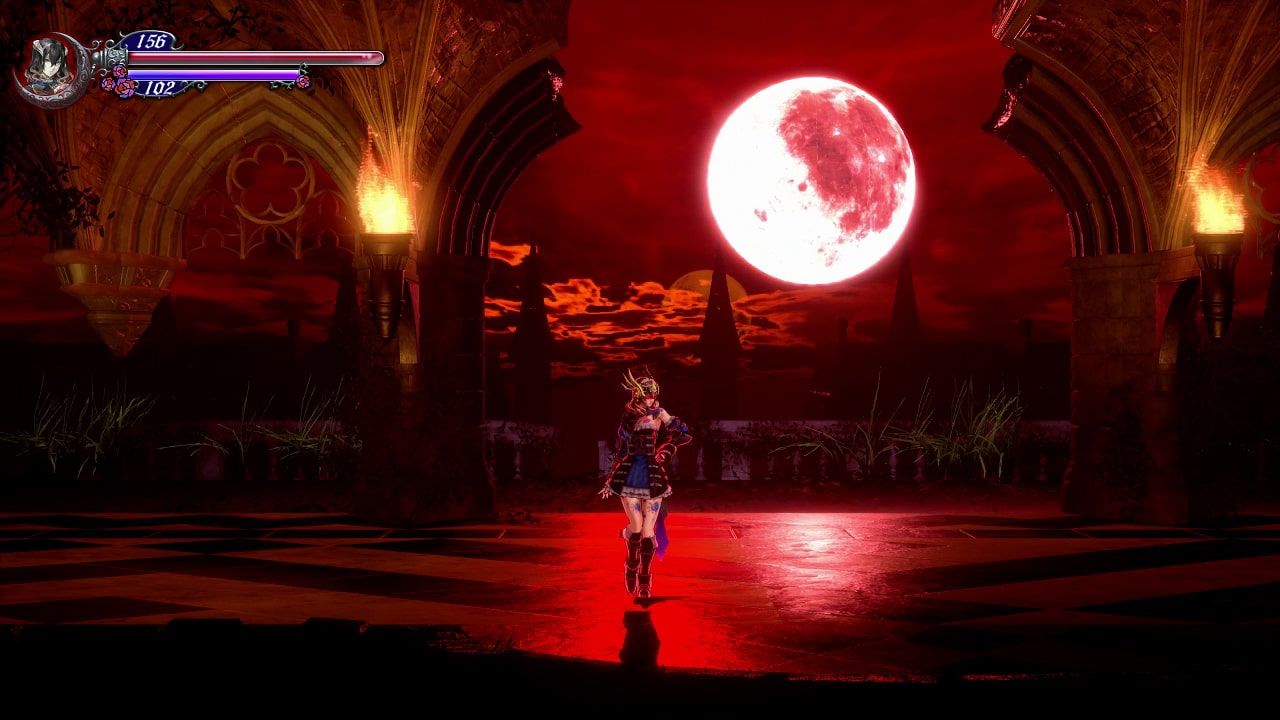
The castle is the heart and soul of Bloodstained: Ritual of the Night as it brims with personality, interesting level design, and a fantastic soundtrack. Grand interiors, sprawling caves hidden underneath a well in the garden, and an underground desert are just a few locations to explore every nook and cranny. There are also plenty of references for Castlevania: Symphony of the Night fans to spot with familiar locations sewn throughout several corners of the gothic labyrinth.
As much as I do adore the art direction of Bloodstained: Ritual of the Night (even underneath the smear of the Nintendo Switch version) there were often times where I couldn’t help but pine for 2D sprite work similar to its spiritual predecessor. While the camera work during certain areas of the castle gives relevance for its 3D choice in rotating some of its grand presence into the background, long-winded story segments and cutscenes can often come across far more artificial and stiff due to the clear lack of motion capture and low budget 3D animation.
With that said, the sheer amount of enemies bleeding with imagination stays true to Koji Igarashi’s trademarks. Giant demonic household pets, open books with demonic faces, and a countess Dracula of sorts soaking in a bath of blood. The Hammer horror traits tied into Bloodstained: Ritual of the Night’s industrial revolution time period is a pledge well met for keen investors with a fond memory.
Yet, it’s the backers and early adopters of Bloodstained: Ritual of the Night on Nintendo Switch that look to be getting a bum deal. By the time the final performance update drops it will be those who snatch the game at a sale price that will ultimately benefit the most. There’s a 1.04 update that is expected by the end of November, and I would bet money that it won’t be the last. It’s a real shame because underneath the stigma of a troubled release and a lost first impression of a polished product, lies a potentially magnificent game that holds true to what it once ambitiously set out to achieve.
Version Tested: Nintendo Switch
Review copy provided by 505 Games



